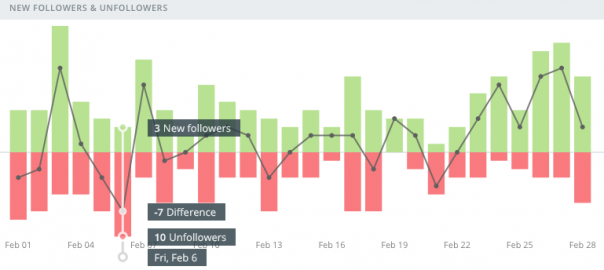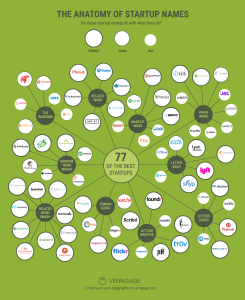What should I post next? I’m sure that you’ve asked yourself this question at some point. Managing social media for a (personal) brand, entails a number of different tasks such as creating and posting content, engaging with your community on different platforms, reporting on your success and measuring your ROI.
But what is it that makes a brand great on social media? One of the deciding factors is the quality of its content as well as the way this content is being delivered. Content is what helps you grow an audience, build meaningful relationships with your community, deliver value and forge your brand’s identity on social.
If you are active on more than one social platforms you often could struggle with content creation as it takes up most of your time. So how can you organize the way you deliver content? That’s right, with a social media calendar! Having a social media calendar not only can save you a ton of time but it also allows you to better plan ahead around significant dates.
Let’s check some tips on where to begin and how to organize your content across platforms overtime.
Write down what you post
What type of content are you sharing? Writing down the Writing down the different types of content you are called to promote on social gives you with a better overview of your content mix and allows you to spread your content accordingly. For example, here at Twitter Counter what we share across platforms is content from our blog and interesting, relevant stories from third trusted sources, tips and tricks, rich media (images, videos), product updates, events and promotions.
Decide when and where to post what
One way to go about this is to dedicate a day of the week to a type of content: for example Mondays tips and tricks, Tuesdays blog posts, Wednesdays promotions and contests and so on.
However, personally, I’m more a fan of mixing content and sharing different types each day of the week. This way, you keep your content diversified and your posting more flexible. Remember that on social media, it is OK to repeat content as long as you present it in a fresh way using a different visual or copy for example. In fact, repeating content on social is key to boosting traffic and expanding your reach.
Which platforms you are going to use and what type of content you will share on each platform Of course, the way you make use of each social platform to distribute your content is entirely up to you as it often depends on your audience. What is important to keep in mind is to experiment with different types of content on different social platforms.
Here’s an example of what Twitter Counter posts across platforms:
Because Twitter is higher frequency platform compared to others, keeping a balance between own content and third party content is important. So with the 20/80 rule of content in mind we try to curate interesting content from other sources which we share along with ours. The majority of own content we share is our blog posts accompanied by images, Twitter polls, promotions and sweepstakes and product updates.

Facebook, Google+ and LinkedIn
We use Facebook and Google+ to post almost exclusively our own content, for example useful tips and tricks from our blog posts, product updates and promotions.
On Instagram, we post a mix of behind the scenes images along with some useful tips and tricks.
Our content strategy for Pinterest is similar to that of Twitter by pinning our own blog posts as well as content from other sources. Pinterest is a great platform for sharing infographics which we curate from third parties.
If you are crossposting across platforms however, keep in mind that even though you could essentially post the same content on every medium, its structure and copy need to be adjusted to the specifics of each platform.
For example, on LinkedIn link posts with longer copy work better than on Facebook, whereas on Twitter, images or video is the best option to accompany your tweets with and boost your reach.
Decide on the frequency and timing
Although there are some general rules of thumb on the posting frequency for each social media platform, the ultimate posting recipe is different for every account as it often depends on the industry and audience, the type of content you post and of course the platform itself.
For example, for Twitter Counter’s Twitter account, we found out that shifting to a once-an-hour, round the clock posting strategy had a positive effect on the overall engagement of our account.

In general, according to a recent Buffer research a good starting point for posting across platforms is this:

Note: it is important to experiment with different frequencies for each platform. Timing is equally important to maximize the exposure of your posts depending on where your audience is.
For Twitter, Followerwonk can tell you when your Twitter followers are online and Twitter Counter calculates the most successful times and days in a week based on your engagement metrics.
Facebook insights offers information on the best times to post for maximum reach whereas for Google+, social media science concludes that weekdays from 09:00 am to 11:00 am are the best.
Mark important dates
Planning your content in advance, allows you to prepare for meaningful dates that could have an impact on the success of your content and your KPIs. But what qualifies as important dates? Marketing campaigns you are planning to launch throughout the year (for example Black Friday or Christmas), product releases, other important dates like new Year’s or Thanksgiving which are a good opportunity to connect with your audience and finally important events in your industry and beyond, such as conferences, sports events and so on. Simply Measured has a pretty handy sample calendar of such important dates.

Create your content and assets
And now the creative part! Crafting your content in advance and choosing your visual assets, can save you a lot of time and stress especially around significant marketing campaigns you might be planning.
When writing your social media copy, keep in mind that length matters. Social media scientist, Dan Zarrella suggests that tweets that are 100 to 115 characters long are more likely to be retweeted.
On Facebook, posts that are maximum 40 characters long do perform better in terms of engagement, whereas Google+ and LinkedIn call for longer updates. For a quick checklist of what you should keep in mind when writing social media copy take a look at this amazing infographic from Quick Sprout.
Pick your template
CoSchedule suggests using three different templates: One for your yearly planning for a helicopter view, one for the monthly and one for the daily.
Depending how much of a visual type you are, you can either use a template or use your scheduling tool to plan your content ahead.
I like to plan the yearly calendar on Excel but for a monthly and weekly overview, I recently rediscovered Trello. You can switch from the dashboard view to the calendar view, use color coding for different types of content and add your visual assets as attachments. Here’s an example:

Also, Buffer’s new social media calendar addition is also super helpful for weekly overviews. And if you’re looking more for an all-in-one overview, Google Calendar is the right one for you.
Evaluate
There are definitely different ways to build your social media calendar and all kinds of content types, times and frequencies you can try out. What is important is to keep a close eye on your KPIs to be able to evaluate your content tactics and the effectiveness of your calendar. Here’s some of the key metrics you should be looking at:
Traffic from social
This is one of the most important metrics for measuring the success of your content and it can easily be measured through Google Analytics with a breakdown per source of traffic.

Engagement
Engagement is still an important metric when it comes to evaluating the impact of your content. Of course there are different levels of engagement you can look at, but for Twitter I always check the overall engagement per week as well as the times and dates that drive the most engagement on Twitter Counter’s Best Time to Tweet graph. This way, I can readjust our Twitter schedule accordingly.
Leads and conversions
For many brands out there, leads and conversions is one of their main social media marketing KPIs. Google Analytics can help you track these metrics however if you’re looking for a more user- centric approach in your measurement, Amplitude is one of the tools that allows you to follow the journey of your audience from social throughout your funnel. You’ll probably need some technical help with setting up your tracking, but once you do, magic happens!
Audience growth
The good old audience growth! No matter what you do on social, this is one of the first metrics you look at, right? Next to that, audience retention is an equally important metric, as a negative audience growth could be an indication that something’s not quite right about your social media tactics.
Now over to you! Are you using a social media calendar? What would you say are the pros and cons? Let us know in the comments right below.
Digital & Social Articles on Business 2 Community(71)











